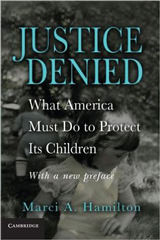In Bill Cosby’s first trial for sexual assault of Andrea Constand, the jury deadlocked on all charges. That seems less likely now for a number of reasons. Judge Steven T. O’Neill’s ruling letting other victims testify, the education of the public in the #MeToo era, and the disclosure of the size of Cosby’s large settlement with the victim make for a very different trial. There was a moment after the mistrial when some speculated that District Attorney Kevin Steele might not re-try Cosby. It is now looking like he definitely made the right decision to forge ahead again.
First, this trial is no longer a “he said, she said” case. For the first trial, even though over 50 women have said that Bill Cosby sexually assaulted them, the judge limited corroborating testimony to one other woman. That was a mistake in my view. The hardest cases for the prosecutors to win are those where the defense can say it’s just “he said, she said.” In this case, one additional victim did not dramatically alter that impression. Here is how an alternate juror explained it: “The evidence wasn’t strong enough. It was a classic he-said, she-said, and there was too many holes—too many holes in the prosecution’s case, I feel.”
This time, the judge is permitting five other accusers to testify. It’s still less than 10% of the women who have come forward, but five is radically different from one additional victim. With the additional victims, the jury can see that there is a pattern here, not just a random evening.
Second, the public is more knowledgeable about the facts of the incidence of sexual assault than it was a year ago. Why? Because the #MeToo movement has brought into the public square so many victims of famous men. The defense has complained that it is hard to get a “fair trial” in light of the #MeToo era. I beg to differ. The movement has nicely educated the public about the incidence of such assault and abuse. Women often couldn’t get a fair trial against their accusers when the public did not know that so many idols and leaders had engaged in sexual assault and/or harassment. As we have seen again and again, there is a tendency to treat the celebrity we loved or revered as sacrosanct. It takes the sunlight of this cultural change to let the facts filter through the cloud of a sterling reputation.
In addition to teaching the public about the incidence of powerful men subjugating women to sexual assault or harassment, the #MeToo movement has given a platform to women to explain why they didn’t tell anyone. It turns out that many of them felt like no one would believe them. That was true of the first witness, Heidi Thomas, this time around.
Others didn’t say anything, because they feared that it would harm their fledgling careers. Check off this factor for Thomas, too, who said she also kept the matter secret because she feared affecting her young modeling career. She also blamed herself, which we know is what victimized women often do. Indeed, we have a term for it when other people do it: victim-blaming. It happens a lot when powerful men are accused. Take, for example, the people who engaged in victim blaming of Harvey Weinstein’s victims here and here.
In short, this first witness set the stage for the jurors to understand how Cosby could have so many victims who were not vocal about the assaults. With so many women echoing similar themes over the last year, she was credible.
Third, this jury was permitted to learn that Constand had received a huge settlement from Cosby, in the amount of $3.4 million. Now, the defense is arguing that she was trying to “milk” Cosby for money, and maybe that argument would have some force if it was a much smaller number. That might show that he was just trying to get rid of an annoying lawsuit. $3.4 million is a lot of money to receive even in a sexual assault case, but it is an extraordinary amount to make the suit go away. That’s not the amount of money one pays to just “get rid” of a plaintiff. In fact, the sheer size of the settlement indicates he knew he was in actual trouble. Surely that will not be lost on the jury.
The new evidence and this new era bode well for the prosecutor taking on Bill Cosby again. It was unfortunate that Cosby’s first trial ended in a mistrial, because so many of the women who had been harboring guilt and shame in other cases felt like it was a slap in the face. But I honestly believe that the first outcome was a result of unfortunate evidentiary rulings, not an indictment of rape victims generally. One can never be certain about what a jury will do, but this time around, this jury is getting a much clearer picture of the defendant right in front of them. He’s not Dr. Cliff Huxtable.









